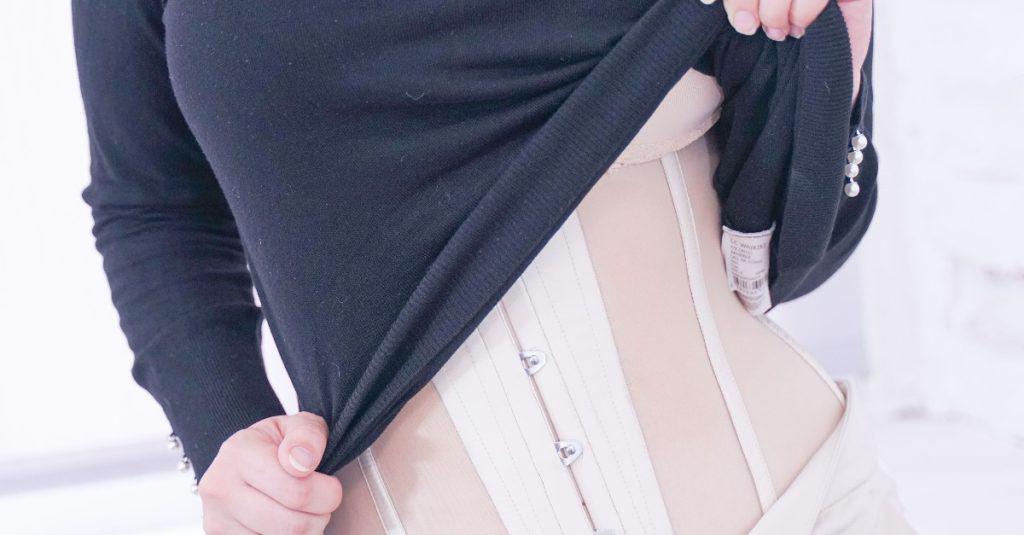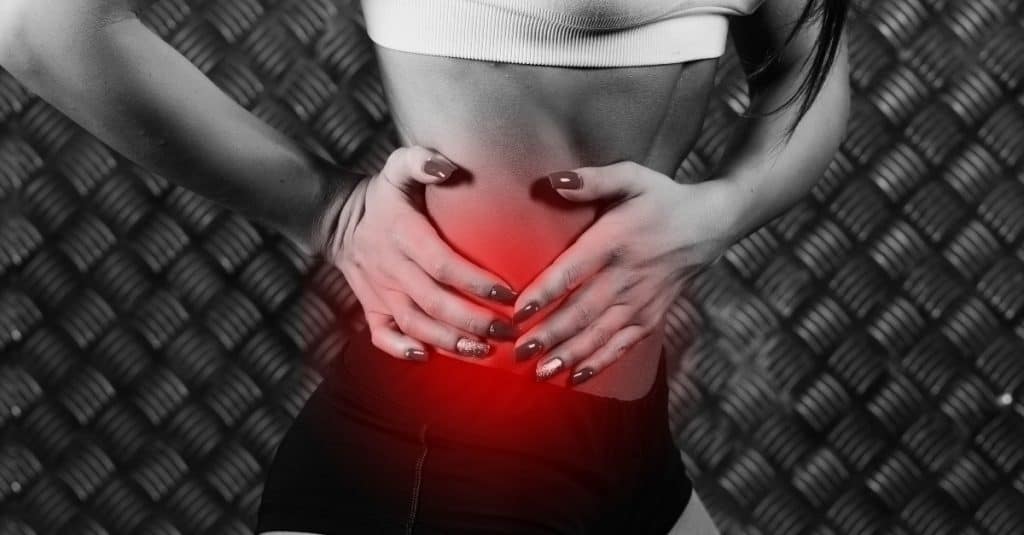Waist trainers have been around for many years; however, they have recently gained popularity due to celebrity and social media attention.
Those who wear these garments claim they can help you lose weight and give you an hourglass figure over time. With so many women wearing them, many celebrity endorsements, and such promising results, is it safe to wear a waist trainer while pregnant?
No, it is not safe for a pregnant woman to wear a waist trainer. Waist trainers are not safe for anybody, especially a woman carrying a growing baby inside her.
Moreover, there is no real science behind the weight-loss claims. And waist training can lead to fractured ribs and compressed organs and lungs.
Here are some important things to know about waist trainers and their impact on your body.
Wearing a Waist Trainer While Pregnant
-
What are Waist Trainers?

Waist trainers are corset-like garments claiming to help you lose weight and ultimately give you an hourglass figure.
They are meant to be worn regularly and snuggly around your midsection. Some even recommend they be worn all the time, including while working out and sleeping.
They are also to be tightened over time for the best results.
-
Risks and Side Effects
According to Grow by WebMD, babies begin to develop their organs between the ninth and eleventh weeks of the first trimester. Their lungs, brain, and central nervous system will continue to develop through week 37.
Therefore, the adverse effects a woman can experience from a waist trainer are magnified when pregnant.
Breathing Issues
Waist trainers make it difficult for your body to get all the oxygen it needs because they reduce lung capacity as they are tightened. And breathing becomes even more strenuous with physical activity. Compound that with a developing fetus pushing your organs as well and getting enough oxygen to mother and baby becomes a significant problem.
A 2019 study published in the Proceedings of the National Academy of Sciences (PNAS) showed that although the placenta can adapt and compensate for environmental impacts, such as nutritionally deficient diets and low oxygen, it may not always be able to function properly.
As the research states, low oxygen to the fetus may lead to miscarriage and fetal growth restrictions “because organs and tissues like the heart, pancreas, muscles, and liver, are very sensitive when they are developing in the womb. If those organs don’t grow properly they are more likely to malfunction in later life.”
Weakened Core and Pelvic Floor

The use of waist trainers leads to weakened abdominal muscles because you’re no longer using them for support, which can result in poor posture and back pain.
Using the restraining garment can also put additional pressure on the pelvic floor weakening it. Strong pelvic floor muscles can help minimize the damage experienced by the strain of carrying a developing baby. Additionally, a strong pelvic floor can make labor and delivery safer.
Nerve Damage
The pressure on your midsection caused by using a waist trainer can lead to damage to the nerve that runs down from the groin. The condition, called meralgia peresthetica, can be usually remedied by removing the waist trainer. However, in some severe instances, medication or surgery may be needed.
The pressure on a mother’s body from a growing baby and a waist trainer would therefore likely lead to a very painful experience.
Gastrointestinal (GI) Issues
Any type of pressure on your stomach can cause discomfort, whether by a developing baby or a restricting waist trainer.
And, even though the compression caused by the waist trainer can lead you to eat less and ultimately lose weight, it can also cause heartburn, leading to esophageal irritation, and may also worsen other conditions, such as irritable bowel syndrome (IBS).
There is no need to make such conditions worse while pregnant by adding a waist trainer to the equation.
Rashes and Infections
Most waist trainers are made of synthetic fabrics that do not breathe. The heat from the fabric may help you lose water weight, but with the sweat and moisture having no way to evaporate, you may end up with irritation, rashes, and potentially bacterial and yeast skin infections.
Comfort during pregnancy is key. The use of a waist trainer may lead you to overheat and at minimum, leave you with a painful skin rash.
Organ Damage
As you tighten your waist trainer to achieve that coveted hourglass figure, you may be damaging your organs in the process. The pressure put on your midsection may push your organs together and they may even shift positions.
Doing this while pregnant could lead to even more damage to you and your baby since you may experience reduced blood flow to your organs, which may ultimately affect their function. In some cases, the damage may be permanent.
-
A Better Option
Just because you’re pregnant and waist trainers are not considered safe to use, doesn’t mean you have to do without the benefits of shapewear. Maternity shapewear can create the smoothness you seek while providing some added support to your belly.
Good maternity shapewear is made of breathable material that uses compression around your legs, hips, and bottom and leaves a mesh panel around your belly for comfort and gentle support.
When selecting maternity shapewear, opt for light to medium control. Some light compression may provide some welcome support to your growing belly.
Be sure, however, to avoid any garment that causes tightness in your private parts to prevent yeast infections and discomfort. During pregnancy, women are more prone to extra discharge and moisture. Therefore, select maternity shapewear that is made of breathable fabric.
Final Thoughts
Although waist trainers have gained popularity and many celebrity testimonials recently, the various claims associated with them have no scientific support. The numerous risks and side effects associated with the use of waist trainers outweigh any potential benefits.
Waist trainers are tightened over time to create an hourglass figure in the wearer. This is not safe for anybody. Therefore, pregnant women should never wear waist trainers and should opt instead for maternity shapewear, which provides support without putting any pressure on the growing baby.